13+ Sample Field Sales Plan
-

Field Sales Executive Telecom Plans and Services
download now -
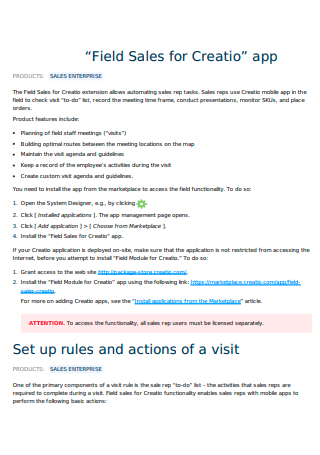
Basic Field Sales Plan
download now -
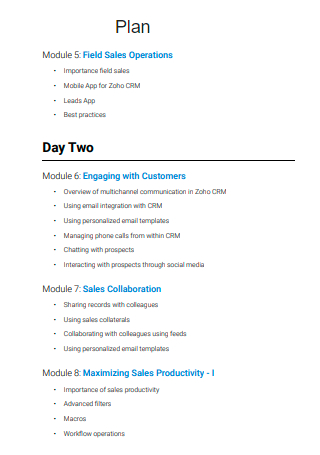
Field Sales Operations Plan
download now -
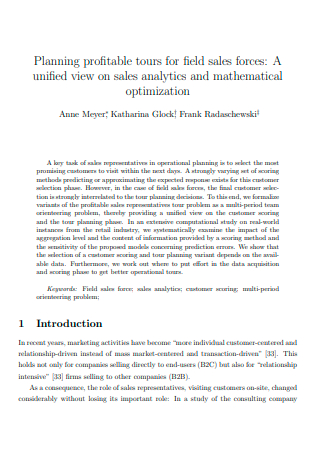
Field Sales Forces Planning
download now -
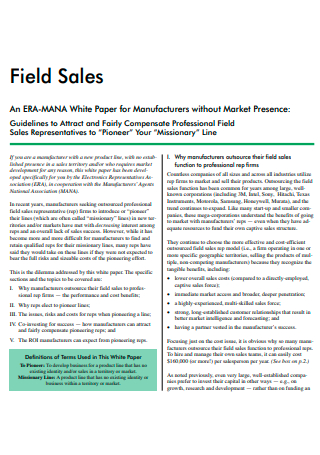
Field Sales Plan Example
download now -
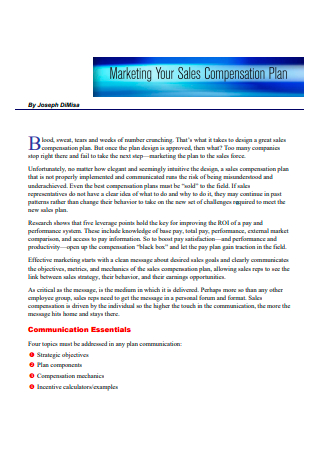
Field Sales Compensation Plan
download now -
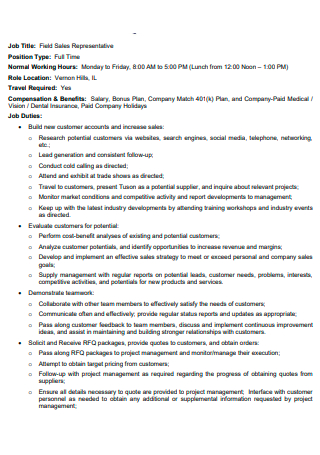
Field Sales Representative Plan
download now -
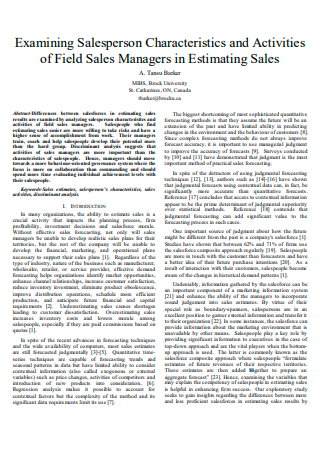
Field Sales Managers Plan
download now -
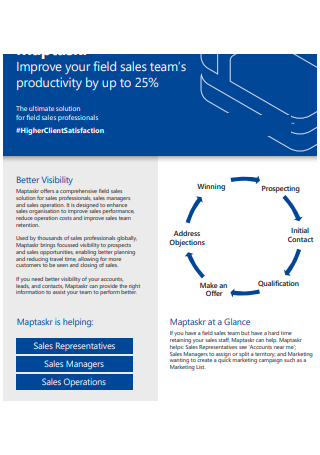
Field Sales Team Planning
download now -
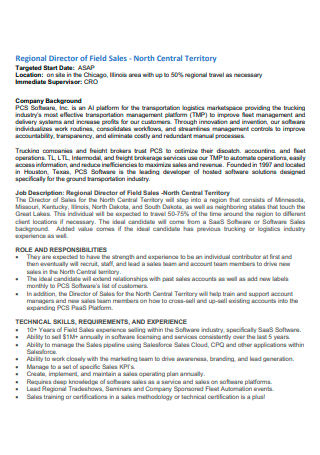
Regional Director Field Sales Plan
download now -
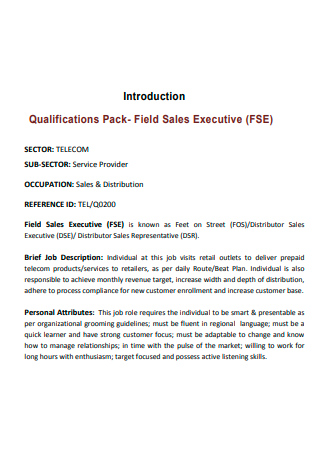
Field Sales Executive Plan
download now -
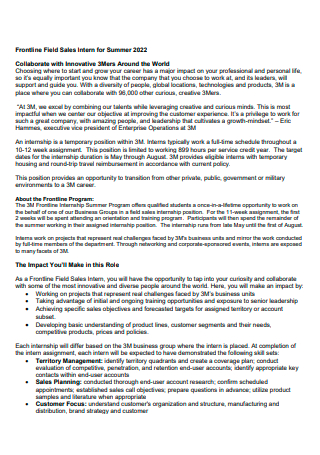
Field Sales Intern Plan
download now -
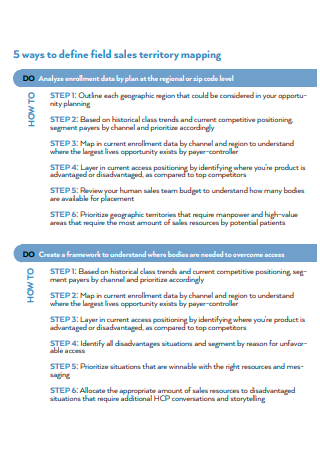
Field Sales Territory Mapping Plan
download now -

Field Sales Plan in PDF
download now
FREE Field Sales Plan s to Download
13+ Sample Field Sales Plan
Field Sales Plan: What Is It?
Win Your Sales with Top Field Sales Strategies
Making the Effective Field Sales Plan
FAQs
What are the benefits of doing field sales?
What are the different types of sales plans?
What are the 4 Ps of a selling strategy?
Field Sales Plan: What Is It?
A field sales plan is a documented business planning strategy that sets out a business’s or company’s revenue goals through outside sales activities. Pretty much similar to a business plan, it highlights the objectives, the market condition, the target market, and the action steps needed to achieve the goals. Not to be confused with in-store selling, field sales focuses more on the outside market. The main concept here is to go out, approach, and meet customers face to face, rather than just waiting for customers to come to you. Usually, field sales representatives are given leads or a list of prospective customers. They then make contact with the leads, pursue them, and finally try and close a sales deal. Field sales is a core part of any marketing and sales strategy. Most businesses rely on outside sales work to boost revenue when in-store customer walk-in rates are slowing down.
Win Your Sales with Top Field Sales Strategies
You were given sales leads by your manager, what are you going to do next? More than that, you were given a sales target and a deadline. So, what is your next move? Field sales representatives should do more than just stand there and rely on warm leads handed out by the office. Leads are potential customers, but it takes skill to turn those potential customers into real customers. Leads can be both warm and cold. Warm leads are those that have an expressed interest in a product or service, while cold leads are names generated based on target market demographics classification. Now, what if all that you had were all just cold leads? How can you still be able to make it in time and reach your sales goals?
Making the Effective Field Sales Plan
Before you can start applying any of your field sales strategies, you first need to have proper planning. Planning is especially important in fieldwork since you don’t rely on customers to first approach you. You’re the one that’s expected to come to them. Unlike in-store selling when customers walk in with curiosity and interest already developed over the product or services, field selling is almost like talking and trying to convince a stranger who, most of the time, doesn’t even have an idea of what you’re talking about! So, how do you convince that blank-eyed stranger to purchase whatever it is you’re selling, and turn that opportunity into your sales advantage? What you need is a plan, a good and effective field sales plan. To make your field sales plan effective, you need to include the following essential elements.
-
Step 1: Executive Summary
The Executive Summary is the foundation of your field sales plan. It provides the core and purpose of your sales plan and provides an overview of what the overall sales planning looks like. Most executive summaries also contain the mission and vision statements. A Mission Statement describes the purpose of the sales plan, what it offers, and to whom it is for. It also reflects the culture and values of the organization that it represents. A Vision Statement gives a depiction of what the sales plan hopes to achieve over a given period. Oftentimes a vision statement is treated as a call to action, a motivation piece that inspires field sales representatives in doing more to be able to attain the sales goals.
-
Step 2: Market Overview
The market overview section is doing a study or a Market Analysis of the current market’s condition. Doing a market analysis is one way of understanding if there is an opportunity for the company’s product or services to be positioned in the market. It is also a way of identifying who the customer target markets are by way of classifying them according to demographics such as by age, gender, location, income, lifestyle, et cetera. One way of studying the market is by doing a SWOT Analysis. SWOT refers to the Strengths of the products or services or even the sales strategies that makes it unique or stand out from the competition; Weaknesses, the factors limiting the success of a sales plan such as lack of budget, resources, or manpower; Opportunities, the available resources that a sales plan could take advantage of, such as using online or social media platforms to generate more leads and sales; Threats, those factors that could potentially harm or cause risk to the sales planning, such as extreme or bad weather, strict local regulations, or even increasing competition in the area.
-
Step 3: Sales Strategies
This is where you list down the sales strategy approaches you plan to use. Before you list down the actions steps, take note first of the given sales target and the timeframe. When planning your sales action steps, make sure that your planning revolves around the SMART Goal, or plans that are Specific, Measurable, Achievable, Relevant, and Time-bound. Create a table that lists down the action steps, the time frame, and the sales target. Ask yourself if each of those action items is realistic enough that they can be accomplished within the given time frame. The Sales Strategies section can also be used as a way to monitor your sales. If you see that the number of your closed sales are not meeting its per week or per day or even per month target, you can make some adjustments or revisions to your action steps, incorporating more aggressive sales strategies, or else team designating. Designating sales action steps for each sales team member is one of the best ways in achieving the sales goals faster since it is multitasking and diversifying sales strategies to be able to reach broader audiences by having multiple sales presence.
-
Step 4: Identifying the Budget and Resources
To support your sales strategies, you need to list down the budget and the resources that you need. Budgeting could be done in the form of a financial plan. A Financial Plan is the overview of the current financial condition that your team has for sales planning, as well as a projection of sales revenue based on the sales strategies. A financial plan is typically made up of a financial statement, a balance sheet, and a sales forecast. Both the financial statements and balance sheets reflect the budget versus the expenses, while the sales forecast is a sales revenue projection based on each sales action step within a given time. The next step is identifying resources needed. For field sales, typical resources come in the form of manpower, or additional field sales representatives, transportation, marketing materials tools such as sales booths, printed ads, flyers, paid commercial ads, or even sponsorship for sales events.
FAQs
What are the benefits of doing field sales?
One of the benefits of doing field sales is that it helps the business achieve sales targets faster. Field sales are supplementing the effort of in-store or inbound sales. By going out there and purposely looking and pursuing your target market, you’ll find that your business not only achieves sales goals within a given time, there is also that possibility of generating more than the sales revenue that was forecasted. Another benefit of field sales is that it builds and strengthens customer relationships. Field sales representatives are always the first ones to initiate face-to-face customer interactions. Having that face-to-face encounter while demonstrating and promoting a product allows the customers to ask questions and concerns on the spot, while at the same time allowing the field sales reps to build rapport and create that customer trust over an engaging conversation.
What are the different types of sales plans?
Some of the common types of sales plans are the 30-60-90 days sales plan, territory-based sales plan, sales budget plan, new product sales plan, and sales training plan. A 30-60-90 days sales plan is a type of planning where the sales goals are broken down into specific periods, namely 30 days, 60 days, or 90 days. Each period segment has its own set of strategic action steps, as well as metrics used to measure and monitor the development of the sales strategies. A territory-based sales plan is dependent upon the dynamics of the location of a specific target market. A sales budget plan is planning that is based upon the provided budget and resources, as well as the estimated expenses related to the sales activity. New product sales are all about the planning around the launching and introduction of a new product into the market, including how the product will be positioned. The sales training plan is a planning strategy that involves developing, polishing, or even upgrading the selling skills of field sales reps.
What are the 4 Ps of a selling strategy?
These are your price, product, place, and promotion. These 4 Ps are important in positioning your business in the market. By making sure that the 4 Ps are utilized and integrated well in the marketing strategy, the business will have a good advantage in being able to secure a top spot in the consumer market.
Doing field sales is an important method of any marketing or sales strategy. It provides the opportunity of reaching a broader target market, as well as has the potential to generate more sales revenue than what is initially targeted. A lot of work goes into the planning process of field sales. From setting goals and objectives, studying the market, creating sales and marketing strategies, identifying budget and resources, all of these are carefully laid out in that document that will serve as the ultimate guide in doing field sales, and that is the Field Sales Plan.
Need help in drafting and making that field sales plan? Try out our field sales plan templates. They’re ready-drafted, easy to fill out, and downloadable for your convenience. Check out one now, and start taking those steps towards a successful field sales experience!
